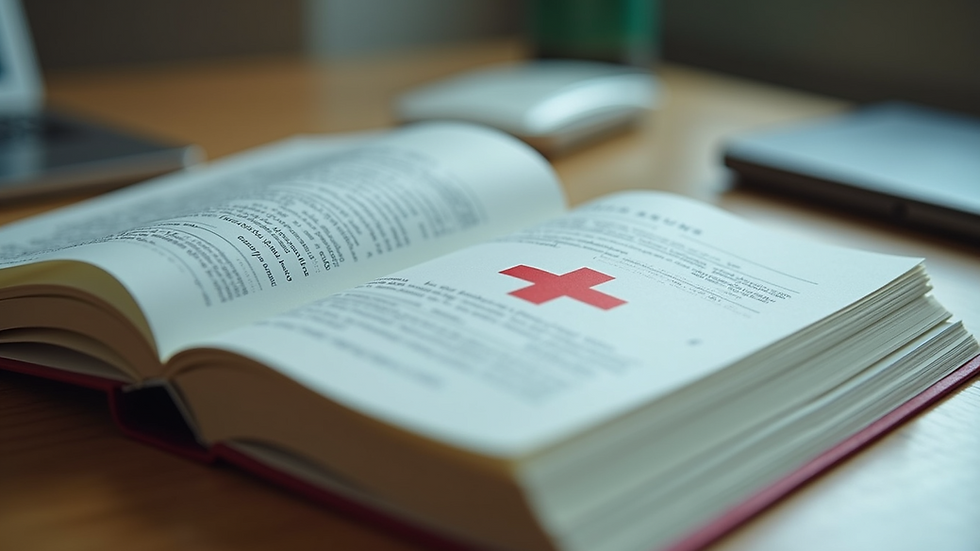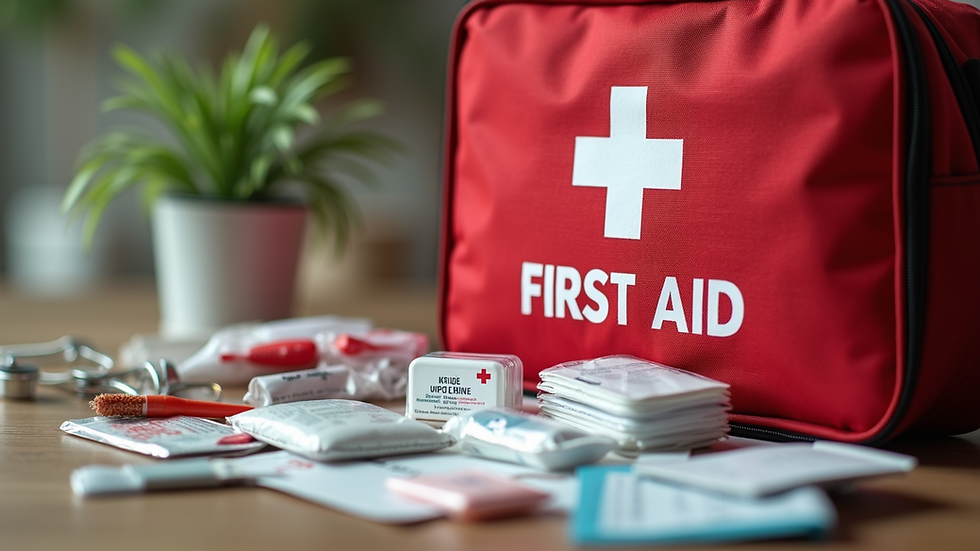Key Skills for Handling Childhood Medical Emergencies
- Aryeh Goldberg

- Sep 15
- 3 min read
When a child faces a medical emergency, quick and confident action can make all the difference. Knowing how to respond effectively is essential for parents, caregivers, and anyone who works with children. This guide will walk you through the key skills needed to handle pediatric emergencies safely and calmly.
Understanding Pediatric Emergencies
Pediatric emergencies differ from adult emergencies in many ways. Children’s bodies are smaller and more fragile, and their symptoms can change rapidly. Recognising the signs of distress early is crucial.
Common pediatric emergencies include choking, allergic reactions, seizures, burns, and fractures. Each situation requires specific knowledge and skills to manage effectively.
For example, choking is a frequent emergency in young children. Knowing how to perform back blows and chest thrusts can save a child’s life. Similarly, recognising the signs of anaphylaxis and administering an Adrenalin auto-injector promptly can prevent a fatal outcome.

Essential Skills for Pediatric Emergencies
To handle pediatric emergencies well, you need a combination of practical skills and calm decision-making. Here are some of the most important skills to develop:
1. Basic Life Support (BLS) for Children
Knowing how to perform CPR on infants and children is vital. The technique differs from adult CPR, with gentler compressions and different hand placements. Practising these skills regularly ensures you can act confidently when needed.
2. Managing Airway Obstruction
Choking is a common emergency in children. Learning how to clear an obstructed airway using back blows and chest thrusts is essential. For infants under one year, the technique is different from that used for older children.
3. Recognising and Treating Allergic Reactions
Severe allergic reactions can escalate quickly. Being able to identify symptoms such as swelling, difficulty breathing, and hives is critical. Administering an Adrenalin auto-injector promptly can save a life.
4. Controlling Bleeding and Treating Wounds
Children often suffer cuts and scrapes. Knowing how to clean wounds properly and apply pressure to stop bleeding helps prevent infection and complications.
5. Handling Burns and Scalds
Burns require immediate cooling and careful assessment. Understanding the severity of burns and when to seek medical help is important.
6. Managing Seizures
Seizures can be frightening but knowing how to keep a child safe during a seizure and when to call emergency services is crucial.
7. Safe Transportation and Emergency Calls
Knowing how to safely move an injured child and what information to provide when calling emergency services ensures timely and effective help.

What are the 7 principles of first aid?
The 7 principles of first aid provide a foundation for effective emergency care. They guide responders to act safely and efficiently:
Preserve Life - The primary goal is to keep the child alive.
Prevent Further Harm - Avoid causing additional injury or complications.
Protect the Unconscious - Ensure the airway is clear and the child is in a safe position.
Promote Recovery - Provide care that supports healing and comfort.
Provide Reassurance - Calm the child and those around them to reduce panic.
Seek Medical Help - Know when to call emergency services or get professional care.
Record and Report - Document what happened and the care given for follow-up.
Applying these principles helps responders stay focused and effective during stressful situations.

Practical Tips for Staying Prepared
Preparation is key to handling pediatric emergencies confidently. Here are some actionable recommendations:
emergency pediatric first aid to learn hands-on skills.
Keep a well-stocked first aid kit accessible at home, in the car, and at childcare settings.
Learn how to use emergency equipment such as epinephrine auto-injectors and inhalers.
Practice emergency drills with family members or colleagues to build muscle memory.
Stay calm and focused during emergencies; your composure helps reassure the child.
Know emergency contact numbers and have them saved on your phone.
Educate children about safety appropriate to their age to reduce risks.
By integrating these tips into daily life, you can improve your readiness for pediatric emergencies.
Building Confidence Through Knowledge and Practice
Handling pediatric emergencies requires more than just knowledge - it demands confidence and quick thinking. Regular training and practice help build these qualities.
Joining community first aid groups or attending refresher courses keeps your skills sharp. Sharing knowledge with others also spreads awareness and preparedness.
Remember, every second counts in an emergency. Being equipped with the right skills and mindset can save a child’s life and reduce the severity of injuries.
Stay informed, stay prepared, and be ready to act when it matters most.





Comments